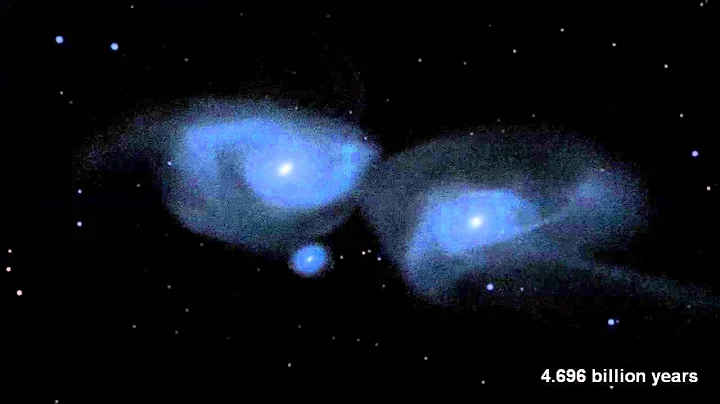Andromeda over the Sahara.

The Andromeda Galaxy is the farthest thing we can see with the naked eye from Earth. The galaxy is about 2.5 million light-years away from Earth. In a few billion years it will collide with our Milky Way and eventually merge together. This kind of thing sounds terrifying, but in fact it will not have the slightest impact on the life living in these two galaxies, especially on the individual life. This photo was recently taken in the Sahara Desert area of , and is composed of three frames superimposed. The foreground was taken shortly after sunset when there was still a shimmer in the sky. The galaxy appears large in this photo, but this is just an illusion created by contrast with the foreground figure. Jordi Coy
Do you believe the world is real? Even if all you see is the past? This is a philosophical question.
html When light set off from the Andromeda Galaxy 12.5 million years ago, it believed that it represented the appearance of this galaxy in an extremely true way. When it arrived at the Earth 2.5 million years later, it was equally confident. But is the Andromeda Galaxy still the same as it was when it started? The vastness of the universe is beyond imagination. In our solar system, it takes 8 minutes and 20 seconds for light to reach the earth from the surface of the sun, 1.28 seconds for the sunlight reflected by the moon to reach the earth, and 4 minutes and 27 seconds for the sunlight reflected by Mars to reach the earth; in our galaxy Inside, many images of stars, star clusters and nebulae come from hundreds, thousands or even tens of thousands of years ago; and outside the Milky Way, the difference in space and time is measured in millions to tens of billions of years.So strictly speaking, the starry sky we see is all in the past, and they come from different moments in the past.
Our perception of the world around us is almost “what you see is what you get”. And when astronomers tell us that it takes that long for light to travel through the universe to reach the earth, will you still believe that everything you see is true? As a result, many people have a strong sense of emptiness and begin to doubt the reality of the world.
This may be because we are accustomed to using human standards to measure the universe, and the two are not on the same scale at all. But the thinking this huge difference brings to us is indeed valuable. What did you learn from it?
Reference
Andromeda over the Sahara Desert
https://apod.nasa.gov/apod/ap220711.html


![Journey to the Andromeda Galaxy [4K] - DayDayNews](https://i.ytimg.com/vi/-ybiXR2WCFQ/hq720.jpg?sqp=-oaymwEcCNAFEJQDSFXyq4qpAw4IARUAAIhCGAFwAcABBg==&rs=AOn4CLBQjXsv5wNaPMew8Xhd5dKDiOWGWw)


















